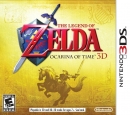Bofferbrauer2 said:
Archival discs, as their name implies, are meant for long term archiving of media (like movies) and not intended for consumer level products: “The development is specifically for professional archiving,” the Panasonic spokesman said. “We are not currently considering optical discs for household consumer use.” In other words, those are probably too expensive to make or too fragile to warrant consumer products with them. In any case, I don't expect any consumer products, like consoles, with those. Improved error detection and reduced crosstalk would probably work, but that would also make both the discs and the drives more expensive. Hard drives had to sidestep this by now and are using helium-filled cases (because helium has almost no air friction and is easier to handle than pulling all the air out, creating a vacuum) to allow for faster rotation speeds, and no dust and more discs inside the casings. So yeah, like I said, more than those 100GB don't seem practical right now. It's technically possible, but very unlikely to be used in consumer products anytime soon. |
I believe the read speeds for AD are subpar for gaming use, too - at least, if the game is going to be utilizing the medium's space appropriately.
Besides that, AD is designed to be highly durable - which means the discs are indeed expensive.
Just as you said, the name implies that Archival Disc is intended for archiving data for long-term availability and preservation. Not regular use.
| Jumpin said: Optical disks are becoming antiquated, that’s why they’re going up in price. The market is shrinking and price adjustments need to be made to account for revenue and profit loss to avoid a stock collapse during the transitional phase. Cartridges are an obsolete form of technology. They’re a different sort of media utilizing different technology and form factors than Switch game cards. |
To expand on this:
Cartridges used ROM storage for the games themselves, then battery-backed volatile memory for savegames.
Game cards use flash memory for storage, which is a[n optionally] rewritable distant evolution of ROM, and doesn't require a battery for maintaining saved data.
![]() SW-5120-1900-6153
SW-5120-1900-6153





















